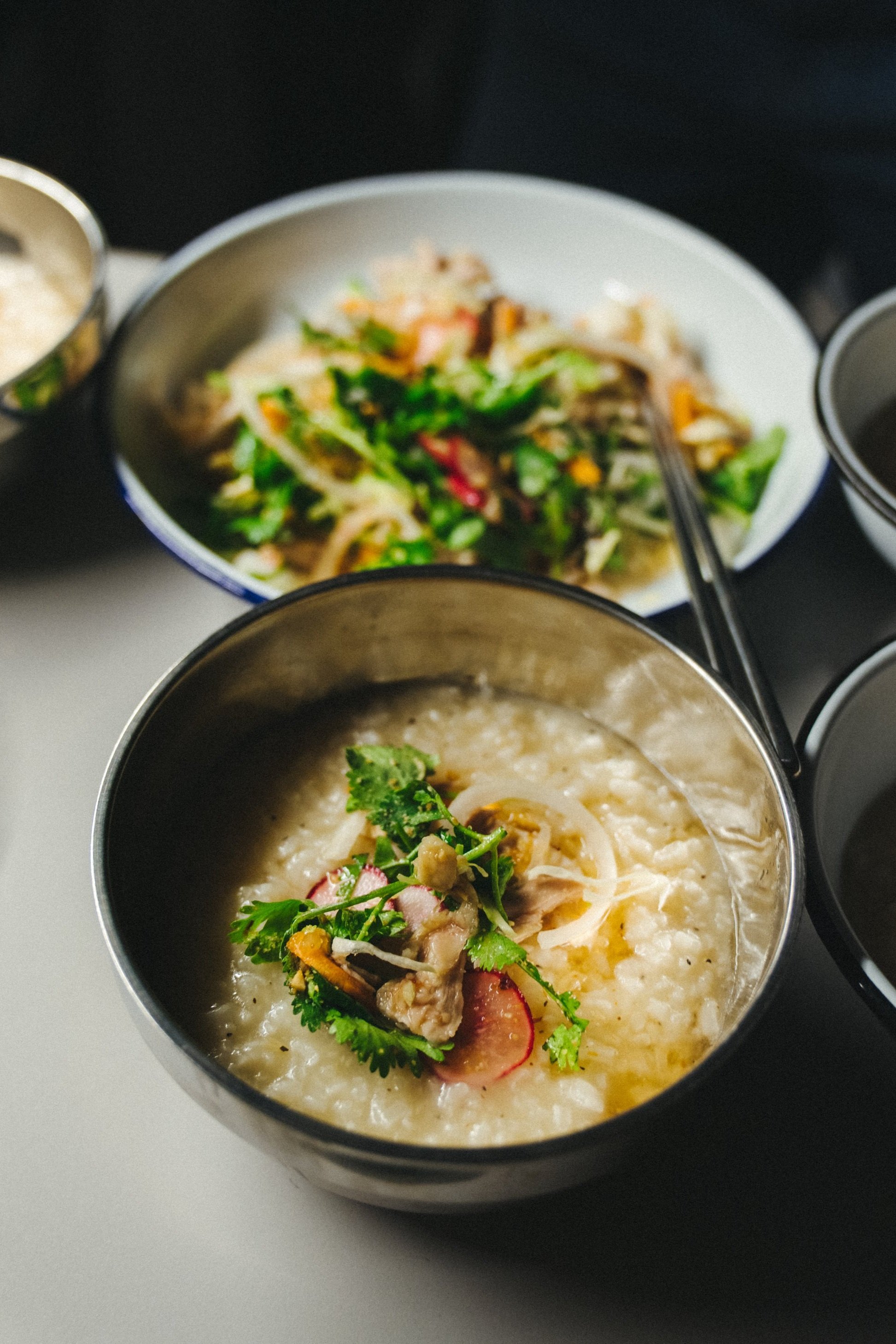EASY CAMP RECIPE: Vietnamese Chicken Rice Porridge, Cháo Gà
Few things hit harder than a bowl of hot soup at a chilly camp night. A bowl of chili is fine. But it doesn’t get the body temperature up. Chili is a hot dish that is best enjoyed when its much cooler to make it much more shovel-able (the act of taking a spoon of food to shove into your mouth without worry of burning your whole mouth). Asians LOVE soups that take time tested techniques to enjoy when they’re face melting-ly hot. You know, soups that are so hot that they fog up your glasses as you go into for a bite. That’s the kind of hot soups we’re talking about here.
Rice porridge, or congee, is a dish that has its place across all asian cultures. The Chinese have jook, the Filipinos arroz caldo, the Cambodians have bor bor, the Koreans have dakjuk, and the Vietnamese have cháo.
Congee is incredibly humble food. It’s origins going back to the time when workers and families didn’t have too many food options. Rice was available and cheap. Good quality proteins were not. But animal bones were available to make stocks. Thus, congee was born.
These days, it’s enjoyed in various ways. Most asian cultures enjoy it for breakfast. Others, like the filipinos, have transformed it to become a sweet dessert dish, champorado.
My parents immigrated to the United States from Vietnam after the war. Like millions of other immigrants in the States, they brought the things they missed the most with them: the food. In Vietnam, congee is mostly enjoyed at first thing in the morning before it starts to get really hot. But in the America, it’s become a weekend dinner meal. It’s become a special meal.
And now, we enjoy it at camp.
We recently went on a trip with Bound for Nowhere exploring some not-so-well-known parts of the southwest. We knew we were going to camp higher up with it being a little chillier so MAK and I, cooked up this rice porridge and its accompanying salad. You can watch this video of our adventures!
INGREDIENTS
SERVES 4-6
Prep time: 10 minutes
Cook time: 45 minutes to an 1 hour
4 chicken thighs, bone-in
1/2 cup jasmine rice
1 32oz box of chicken stock
2 cups water
3 tbsp of ginger, or ginger paste
1/2 a medium onion
4 tbsp of fish sauce
salt, to taste
pepper, to taste
coriander, chopped
green onion, diced
DIRECTIONS
In a big stock pot, bring the 32oz box of chicken stock, 2 cups water to a boil, 1/2 an onion, and 3 tbsp of ginger to a boil. When camping, I buy the squeeze bottles ginger paste to simplify prep.
Once the pot comes up to a boil, add in the 4 chicken thighs, bring it to boil a boil again, then turn the heat down to a slow simmer. Let the chicken cook for about 15 minutes or until throughly cooked. If you have a meat thermometer, look for an internal temperature of 165 degrees F.
Pull out the thighs once cooked and set aside to cool down. Turn the heat up to medium heat then add in the 1/2 cup of jasmine rice. Keep an eye on the pot. The moment it starts to bubble, bring it back down to a simmer. Continue to simmer for 30-40 minutes, or until the rice has gone way past being properly cooked. If the jasmine rice has “exploded” and the starches have started to thicken the soup, then you’re in a good place. Season the porridge with the 4 tbsp of fish sauce, and salt and pepper to taste. Remove the ginger, and onion before serving.
Once the chicken thighs have cooled down enough to touch, take two forks and shred the meat. This meat will go into the Vietnamese chickens salad. The salad is traditionally enjoyed with this rice porridge. You can find the recipe here.









Nestled amidst the lush plateaus and misty mountains of Vietnam, the charming city of Dalat unveils a tapestry of beauty that captivates the senses. Known as the "City of Eternal Spring," Dalat is a hidden gem beloved by travelers seeking tranquility, breathtaking landscapes, and, of course, gastronomic wonders. During the French occupation of Vietnam, French citizen would often flock to the cooler temperatures of the mountainous region of Dalat to as a get-away from the usual hot and humid climate of the cities and jungle below. This is the reason many buildings look French and have that small French town vibe.